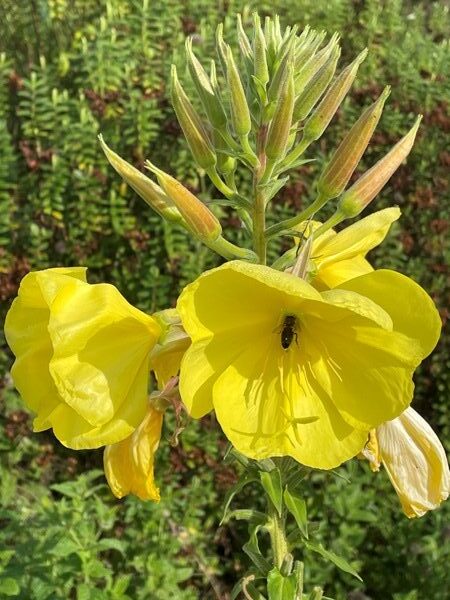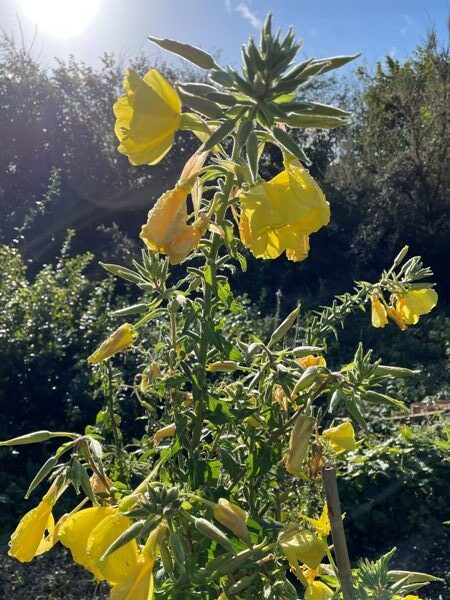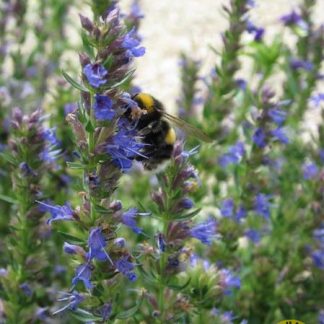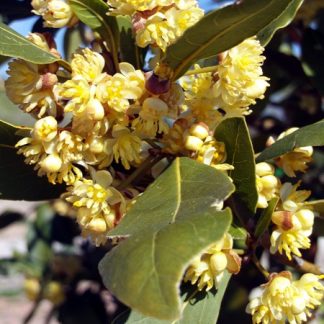Description
Onagraceae (Family name)
Forage for Pollinators: Produces Pollen which is sought out by Honeybees. Yellow strands can be seen trailing from their legs when they have visited these flowers as the pollen is very large and attached to these fine yellow strands. Also Bumblebees and Solitary bees. Pollinated at night by Moths.
Flowering time: June, July, August, September.
Growing information: BIENNIAL widely naturalised in the British Isles, growing to 1.2 m (4ft). Prefers well-drained soil in sun, but tolerates many soils. Hardy to minus 30ºC. Producing large yellow flowers, this plant can look stunning at the back of a border, and after it has set seed, and the seed is fully ripen and harvested (it will not live another year) its roots can be dug up and boiled, making a succulent, sweet vegetable. Save seed, some for sowing, some for grinding up to add to muesli or garnishing meals for its excellent source of Gamma-Linolenic Acid. Can self-sow if planted in the right position. It is noted for attracting wildlife. PLANT (first year) to flower the following June.







